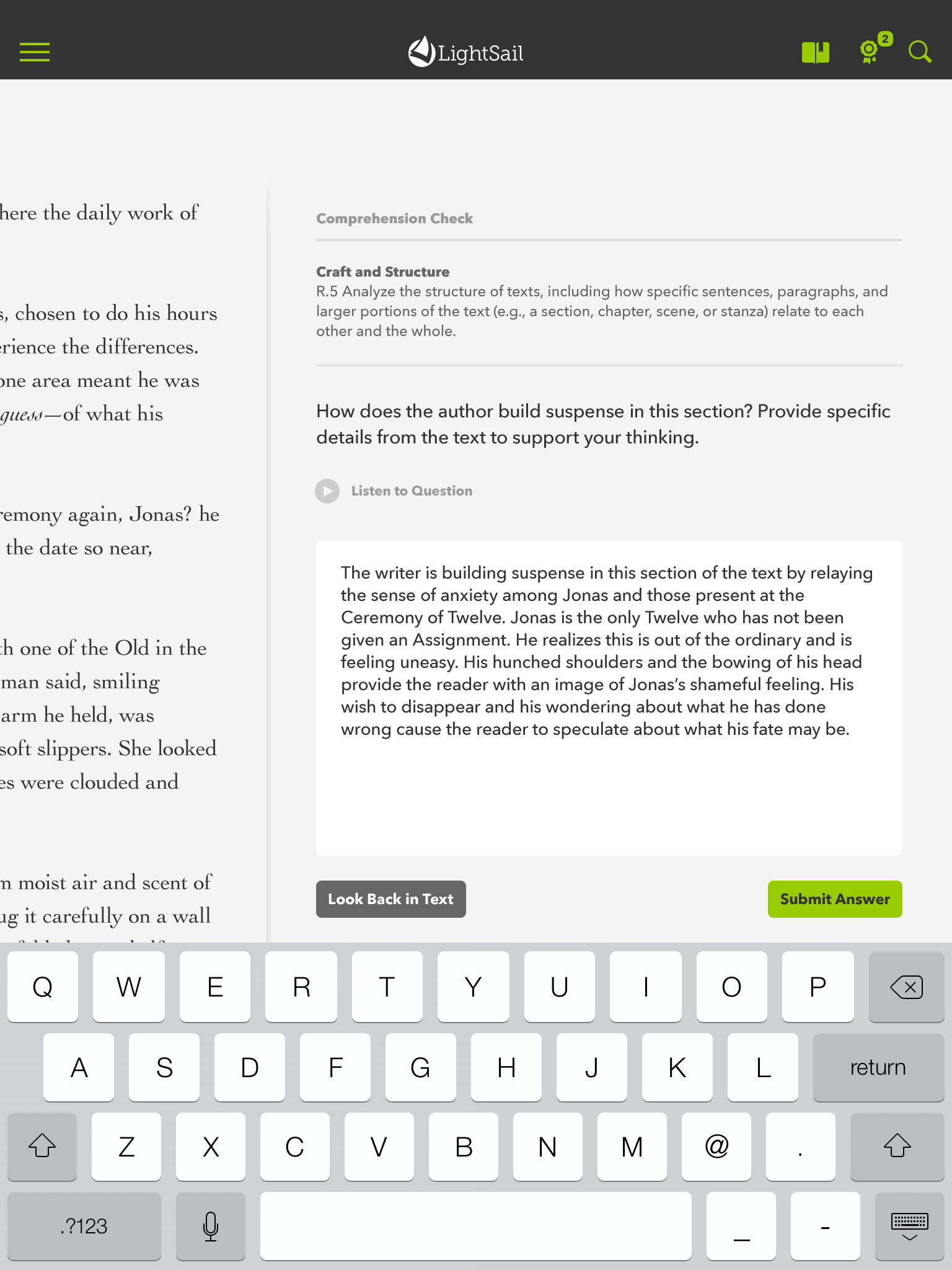
Lauren Bochicchio Beaver is a LightSail Instructional Coach who expends her boundless energy in LightSail classrooms around the country — and spends her free time trying out new workout classes! As a teacher, she was just as enthusiastic and in 2013 her homeroom class became the first 6th grade team to ever win Spirit Day. She hasn’t stopped gloating about it since.
‘Tis the Season
As teachers, most of us are familiar with the D.E.A.R. Campaign. D.E.A.R stands for “Drop Everything and Read” and ever since it’s appearance in Beverly Cleary’s Ramona Quimby, Age 8 – one of my all-time favorite books from my childhood – D.E.A.R programs have popped up all over the United States. Many schools even hold special D.E.A.R. reading days every April 12th to commemorate Beverly Cleary’s birthday. [1].
Unfortunately, another “campaign” seems to pop up in schools around the country around this time of year as well – Drop Everything and Test. In recent years, the United States DOE has recommended schools spend no more than 2 percent of classroom time taking tests. [2] The message is clear: the on-average 112 tests students take between pre-kindergarten and high school graduation are simply too much, but the reality remains that this time of year too much time is dedicated to not merely testing, but the drill and kill of test prep. As a result, we are seeing a fundamental change in the experience of schooling for the majority of American children.
Like many of you, the annual “test prep season” – those months and weeks leading up to the test – were some of my least favorite of the school year. This “teaching” is stressful for students and teachers alike and the frenzy leaves everyone feeling drained and less like great readers and writers and more like testing robots. Yet, because so much is riding on these tests they cannot be ignored and as educators, we feel a responsibility to our students and ourselves to ensure we are prepared as possible when the big day – or days – roll around. But it doesn’t have to be this way – this is where ed tech can be extremely effective as an antidote to test prep season.
Does it Have to be this Way?
In my experience as a K-12 literacy coach, I’ve learned that in order to mitigate test prep, an effective ed tech program must have the following key traits:
- Access to (excellent) authentic texts: Research has widely shown that when kids read a lot, their reading becomes stronger, so it’s key that any good reading curriculum (or test prep unit) focuses on helping kids find books they can read and want to read. [3] Supporting studies show that time spent in the classroom helping kids develop strategies for keeping their minds in a book will, in turn, help them keep their minds on the test. [4] Bottom line? Kids need access to appealing, on-level texts within which they can practice test-taking strategies. (Hint – printed test prep passages or packets usually won’t cut it!)
- Realistic practice: Presenting passages, problems, and questions in formats similar to that of standardized tests allows students to practice in a natural, ongoing fashion. As a result, when students go to take the test they feel familiar with the format and confident with their ability to tackle these types of assessments.
- Timely data: This is the big game-changer. I always used benchmark assessment data to improve and personalize my instruction, but let’s face it — not all schools get that data as often as they should. Being able to monitor progress allows teachers to fine-tune reading instruction in the moment. Now we don’t have to wait until “test prep” time to evaluate what our kids really know!
- Performance transparency: Students need to know their current performance in relation to expected performance. Transparent data sharing practices whereby teachers students are aware of progress toward expected goals supports the we wish to foster for students. [5] Students take their goals seriously and hold themselves accountable due to the immediate assessment feedback. Because their success is so tangible, students naturally improve their practice whether in reading, writing, or mathematics.
Real Classrooms, Real Results
So what do these things look like in a real school? Last year, New York City-based K-12 Literacy Coach Jessica Scanlon and her colleagues decided to make this kind of change. They dialed back their test prep and instead used ed tech products, like LightSail, that provide organic and ongoing practice of test-related skills and competencies. The insight they gained into student progress mitigated the need for outdated drill and kill test prep. Jessica shares her experience below:
“As literacy coach, I introduced LightSail for Language Arts instruction for all of our 4th – 7th grade students. Teachers in my school receive progress data on specific skills each and every time kids read. Access to this regular performance data had a huge impact on our teaching year-round, allowing us to fine-tune instruction to strategically meet students’ reading needs.
The instructional shift extended to our test preparation. In the past, we would constantly practice reading comprehension passages and questions during the weeks leading up to the test in order to gauge student readiness and remediate as needed. The lack of resources and availability of high-interest passages made it difficult to motivate students, and teachers felt as if they were constantly grading practice tests.
With LightSail, we knew in the fall where students were struggling and we began work – during whole group instruction, small group work and individual conferences– to address skill gaps months ahead of the test.
As the test approached, we didn’t alter our reading instruction to build up test-taking skills. Instead, we kept doing what worked all year – building students as great readers… The burnout that students experienced in years prior was replaced with excitement about reading.”
Hearing this testimonial, I’m excited to think of the possibilities that ed tech can bring when it comes to prepping for high-stakes testing. Is educational technology the antidote to all of the concerns and stresses surrounding standardized testing? Probably not. But it does offer a pretty powerful tonic for some of the less than ideal aspects of the high-stakes tests – and it might just leave a little time for ALL of us to “drop everything and breathe”.
[1] http://dropeverythingandread.com/
[2] Zernike, K. (2015). Obama administration calls for limits on testing in schools. New York Times, p. A4. Retrieved from: http://www.nytimes.com/2015/10/25/us/obama-administration-calls-for-limits-on-testing-in-schools.html
[3] Calkins, L. (2001). The art of teaching reading. New York: Addison-Wesley Longman.
[4] Santman, Donna. “Teaching To The Test?- Test Preparation In The Reading Workshop.” Language Arts 79.3 (2002)- 203.
[5] Dweck, Carol (2015) Carol Dweck Revisits the ‘Growth Mindset.’ Education Week. Retrieved from:
http://www.edweek.org/ew/articles/2015/09/23/carol-dweck-revisits-the-growth-mindset.html
Posted on 1.Jan.16 in Literacy Strategies





